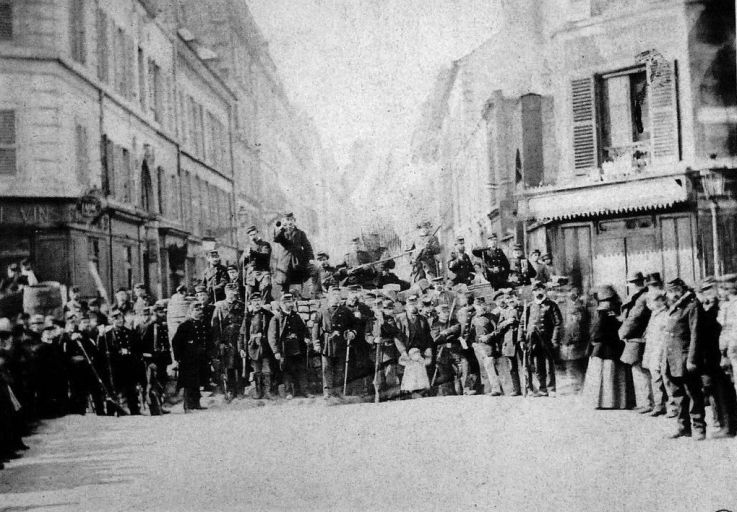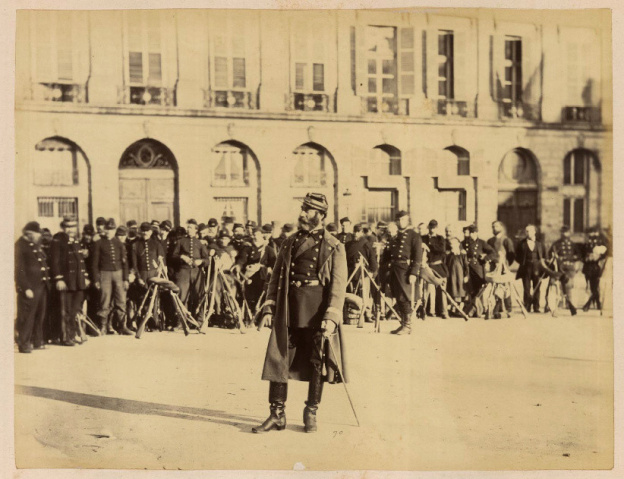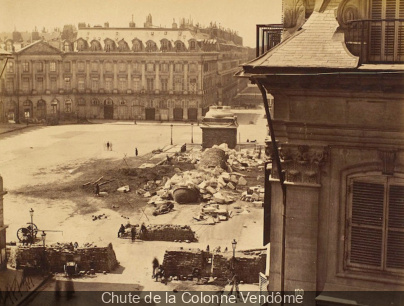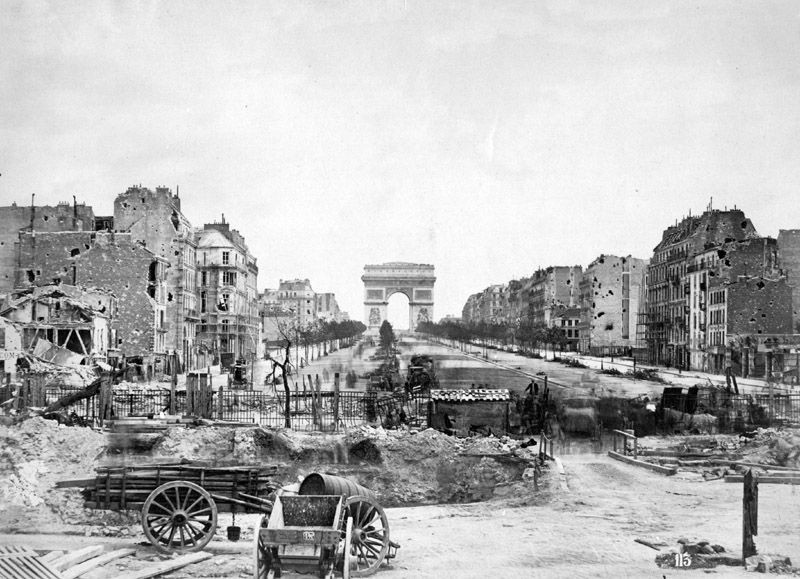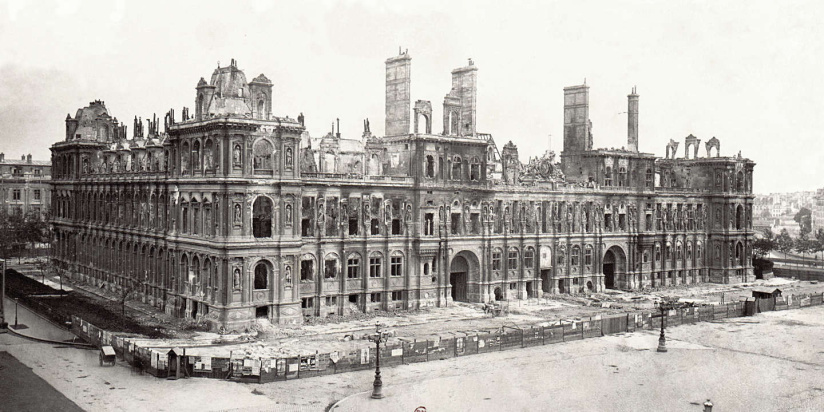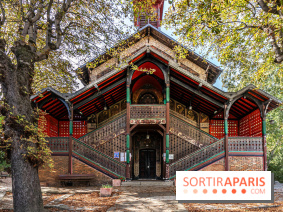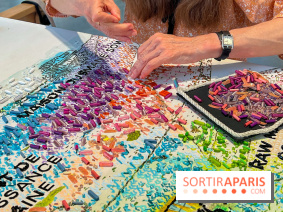Set up in the capital between March 18 and May 28, 1871, the Paris Commune was one of the consequences of the Franco-Prussian War (1870-1871). On September 2, 1870,Emperor Napoleon III surrendered at Sedan to Prussian forces. Two days later, on September 4, despite the opposition of the legislative body and under pressure from angry Parisians, Léon Gambetta announced the deposition of the emperor. The Republic was proclaimed and a Government of National Defense was set up, promising to continue fighting the Prussian army.
But by September 20, Paris was under siege. During the Siege of Paris, Parisians starved to death, and several military attempts failed to liberate the capital. On October 31, 1870, a first attempt to set up a Commune also failed.
Anger rumbles through Paris
In January 1871, Parisians discovered that the Government of National Defense, set up a few months earlier, was holding talks with the German Chancellor Otto von Bismarck with a view to finding an arrangement. On January 22, 1871, another day of popular uprising, during which the crowds were targeted by the army, did not prevent the capitulation of the capital by the signing of an armistice with Bismarck, 6 days later, on January 28, 1871, at the Château de Versailles.
In fact, in addition to handing over Alsace and Lorraine to Prussia, the armistice with the German chancellor required the election and convening of a national assembly to decide on a definitive peace. But the elections were biased: of the 638 deputies elected by universal suffrage on February 8, 1871, almost 400 were monarchist, just over 200 were republican and 30 were bonapartist. The reason for this was the occupation of many départements by the invaders, which prevented some French people from going to the polls!
In the capital, Parisians still refused to surrender and recognize the Prussian victory, electing 37 Republican deputies out of 43, including Victor Hugo and Georges Clemenceau. The gap was widening between the capital, led by a politicized working class open to republican, socialist and even anarchist ideas, which wanted an insurrection against Prussia, and the provinces, which demanded peace.
Some Parisians therefore decided to take up arms, led by the National Guard and its 180,000 members recruited to confront the Prussians. All the more so asAdolphe Thiers, elected head of the Third Republic by the new assembly, authorized the Germans to march on the Champs-Elysées on March 1, 1871. It was an affront too far. In addition, the Assembly, which had been relocated to Bordeaux since the start of the Siege of Paris, decided to move to Versailles, a royalist city par excellence.
This culminated on March 18, when the head of the provisional government decided to arrest Auguste Blanqui, a leading figure in the popular movement, and to send troops against the Parisians, two days after disarming the capital by requisitioning the cannons purchased by Parisians to fight the Prussian army; this was the"cannon affair".
But on the Butte Montmartre , where Parisians had collected the cannons, soldiers fraternized with the Garde Nationale and insurgents, swelling their ranks. These events marked the start of the Paris Commune, a revolutionary movement and insurrectionary government that lasted 72 days .
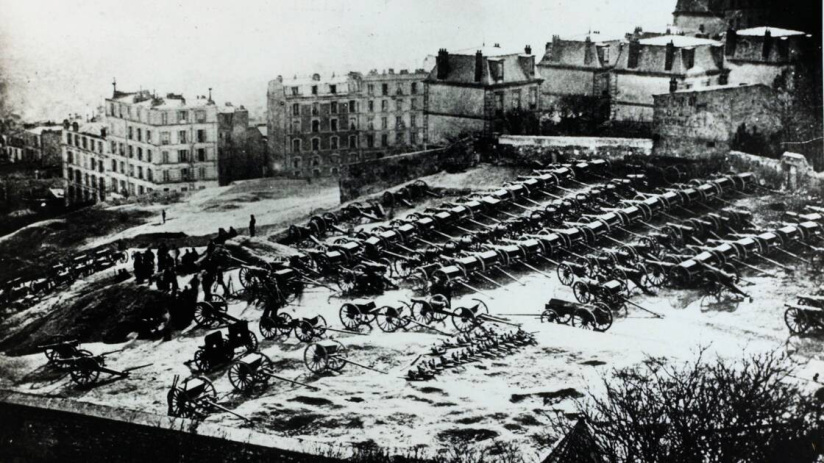



Major solidarity and social measures
On March 26, the Central Committee of the National Guard moved into theHôtel de Ville and organized elections. 2 days later, the new republican and socialist city council proclaimed the Commune in the Place de l'Hôtel de Ville. The Commune quickly became entirely independent of the existing government, and the working classes were buoyed by this new political effervescence. The Communards were determined to shake up the current government and establish a new social order favorable to the working classes.
In its program of April 19, 1871, the Commune summed it up thus: "The communal revolution, begun by the popular initiative of March 18, inaugurates a new era of experimental, positive, scientific politics. It is the end of the old governmental and clerical world, of militarism, of functionarism, of exploitation, of agiotage, of monopolies, of privileges, to which the proletariat owes its servitude, the Patrie its misfortunes and its disasters."
Intense legislative activity then began, and numerous solidarity and social measures were taken, even though they had no legitimacy in the eyes of the national government: extension of the deadline for settling debts and installments, pensions for wounded soldiers, widows and orphans of the National Guard, requisition of idle housing for the benefit of bombing victims, creation oforphanages, distribution of meals, opening of citizenship to foreigners, enhancement of the status of workers and their rights, requisition of the workshops of deserting bosses for workers' cooperatives, prohibition of employers' fines and deductions from wages, proposal of a minimum wage... Freedom of the press was also reaffirmed, with the creation of a number of far-left newspapers, including Le Cri du Peuple, founded by Jules Vallès .
Other measures were taken in the judicial sphere - free marriage by mutual consent, free notarial acts, prohibition of warrantless searches, prison inspections - as well as in education. Education was secularized and denominational teaching banned; religious symbols were removed from classrooms; a commission was set up to study the education of girls, and some arrondissements made school free in addition to being secular and compulsory. On April 2, 1871, the Commune also decreed the separation of Church and State, and the abolition of the budget for religious services.
The Commune also marked the beginning of feminist struggles, with the creation of the first mass women's movements led by such federative figures as Louise Michel, who fought for the right to work, equal pay for men and women , and the right to vote for women. From then on, the Commune recognized common-law unions and divorce by mutual consent, and began to implement equal pay for equal work.
Bloody Week and the end of the insurrectionary movement
Faced with these innovative rights that upset the established order, anger rumbled in Versailles, where Alphonse Thiers enjoyed the support of Chancellor Bismarck, who shared his desire to repress the Communards. Thiers assembled an army of 130,000 soldiers under the command of Marshal de Mac Mahon, to retake Paris from the insurgents and the Garde Nationale, who estimated they had 170,000 men at their disposal.
Several battles were fought in March and April 1871 at Courbevoie, Rueil, Meudon, Moulineaux, Clamart and Châtillon, but Versaillais troops eventually dominated the confrontations as they entered Paris during the "Bloody Week ", from May 21 to 28, 1871, and crushed the insurrectionary movement. In the capital, the Versaillais killed everyone in their path, raped women and filled mass graves. The Communards, men and women alike, fought on the barricades and shot prisoners in reprisal.
In the streets of the capital, a number of monuments were destroyed, both because of the scale of the fighting and because of the Communards ' determination to undermine the symbols of the state . The Place Vendôme column, topped by a statue of Napoleon, was knocked down on May 16. The Palais des Tuileries, the Palais d'Orsay, the Palais-Royal, the Palais de Justice, the Palais de la Légion d'Honneur, the Bibliothèque Impériale in the Louvre and the Ministry of Finance were partially - and in some cases completely - burnt down. On May 24, 1871, theHôtel de Ville de Paris was also set on fire, destroying all the city's archives. The final battle took place at the Père-Lachaise cemetery on May 28, 1871.
The number of dead Communards is estimated at between 20,000 and 30,000, compared with 1,364 in the Versailles camp. Subsequently, the measures taken during the events of the Paris Commune were vindicated by the Marxist left, the far left and anarchists, but influenced political ideas far beyond.



